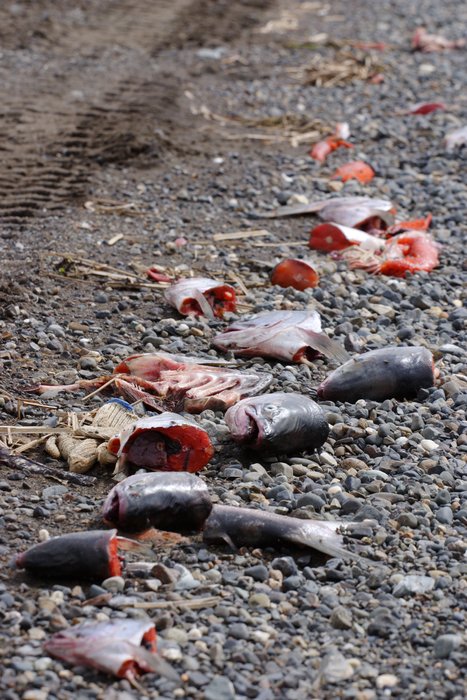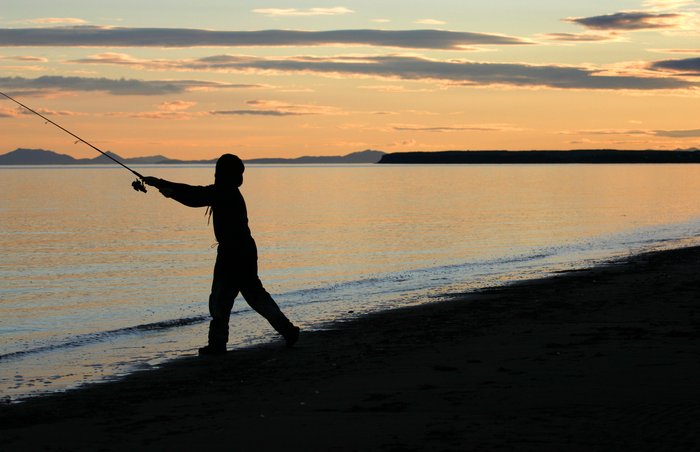
Summary
Bristol Bay hosts the largest sockeye salmon fishery in the world, as well as several other important commercial fisheries, sport fishing, and subsistence harvesting. The quality of life in the region is closely tied to the health of the fisheries, either for employment or subsistence. While the salmon fishery is considered one of the best-managed fisheries in the world, Bristol Bay is at the center of a debate about the potential impact of the nearby proposed Pebble Mine on downstream fisheries.

Background
Commercial fishing
Known as the “sockeye salmon capital of the world”, Bristol Bay in southwest Alaska possesses the largest sockeye salmon run in the world, with a 2008 commercial harvest of 28 million fish. This fishery is generally considered one of the most well-managed in the world. Regulations demand 20-25% of the total fish escape for spawning. Part of the reason for such large runs is the presence of huge lowland lakes such as Lake Clark and Lake Iliamna which provide refuge for juvenile sockeye before they run to the sea.
Also commercially caught in Bristol Bay are smaller numbers of Chinook, Coho, Pink, and Chum salmon, as well as halibut, cod, Pollock, crab, and rockfish. The bay hosts a large herring fishery based out of Togiak. The total value of these fisheries is around $2 billion and represents 40% of the total annual U.S. fish catch. Within the region itself, commercial fishing alone is responsible for 75% of local employment.

FISHING ON THE BRISTOL BAY COAST
 — 
<a class="figure-caption__link" href="/photos/fishing-on-the-bristol-bay-coast/">Get Photo</a></figcaption></figure>Sport fishing
The watersheds that drain into Bristol Bay support a lucrative and world-famous sport fishery for rainbow trout, and also attract a number of fishermen seeking king salmon. Alaskan residents hold about two-thirds of the sport fishing permits in the area but non-residents bring a much larger share of money to the region. Sport fishing contributed about $61 million to the local economy in 2005.
Subsistence harvest of fish
Subsistence harvesting of fish and game is very important in Bristol Bay and provides around 20% of the calories for the region. Salmon have been central to subsistence for thousands of years. Currently, the annual subsistence harvest of salmon averages around 125,000 fish per year. Over 20 other species of fish are also harvested in the region, most importantly smelt, whitefish, Dolly Varden, grayling and pike. In several communities the harvest of these other species exceeds 100 pounds per person annually.
Pebble Mine Controversy
Most of the debate surrounding the controversial Pebble Mine proposal hinges on the possible impact to the fisheries in Bristol Bay. Supporters of the mine argue that the effects will be minimal and that the company behind the mine has a “no net loss” policy regarding fish stocks. Opponents argue that the mine poses an unacceptable risk to fisheries in the form of habitat destruction and pollution, with the perpetual risk of acid mine drainage.
Further Reading
Created: Jan. 19, 2018